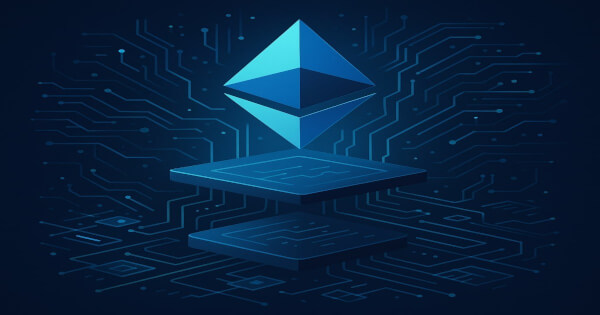Ethereum's Mega Upgrades: How Fusaka and MegaETH Will Turbocharge Blockchain and Crush the Scalability Crisis!
Khushi V Rangdhol Nov 08, 2025 19:49
Ethereum's upcoming Fusaka and MegaETH upgrades aim to address scalability, enhancing transaction speeds and efficiency for Web3 applications, while ensuring decentralization.

Ethereum’s rise from a modest decentralized computer to the backbone of Web3 has been marked by constant evolution. With millions of daily users relying on Ether and Layer-2 solutions for finance, gaming, and AI, scalability has moved from an abstract goal to an urgent necessity. The story of Ethereum’s Fusaka and MegaETH upgrades, set for late 2025, is one of breakthrough engineering, community debate, and the relentless pursuit of decentralization at scale.
Genesis: The Scalability Challenge
Ethereum launched in 2015 as the first blockchain platform that embedded a functional programming environment—the Ethereum Virtual Machine (EVM)—into every node. Smart contracts and decentralized apps flourished, transforming finance (DeFi), culture (NFTs), and industry. Yet with every market cycle, Ethereum faced throughput blockages and high transaction (gas) fees, famously peaking in 2021–2024 amid NFT and DeFi mania.
The roadmap to scalability incorporated phased upgrades:
- The Merge (2022): Moved Ethereum from energy-intensive proof-of-work to proof-of-stake, reducing electricity use by 99% and laying groundwork for future performance.
- Shapella (April 2023): Made staking more flexible and activated multiple protocol improvements for validators and developers.
- Pectra (May 2025): Boosted transaction throughput and set up Fusaka’s infrastructure with preliminary changes in consensus and execution layers.
Even with these milestones, user adoption outpaced network capacity, and “Ethereum killers” like Solana and Avalanche began offering speedier alternatives. The stage was set for a massive leap forward.
Fusaka Upgrade: Engineering a Scalable Base Layer
Slated for mainnet activation in December 2025, Fusaka is the product of four years of proposals and testing, merging 12 Ethereum Improvement Proposals (EIPs) with intensive validator and Layer-2 collaboration. Fusaka’s core advances:
“PeerDAS and Blob Expansion”
PeerDAS (Peer-to-Peer Data Availability Sampling) allows nodes to verify only fragments (“blobs”) of block data—rather than the entire block—making validation far less resource-intensive. This means home users can run validators without high bandwidth, increasing true decentralization. Blob forks and scheduled “Blob-Parameter-Only” expansions multiply the amount of data Layer-2 protocols can feed to the base layer, crucial for scaling Arbitrum, Optimism, zkSync, and other L2s.
“Verkle Trees and EVM Optimization”
Traditional Merkle trees are replaced by Verkle trees—compact cryptographic proofs that drastically reduce network size requirements and data transmission times, boosting node inclusivity and making Ethereum lighter and faster. Enhanced EVM Object Format (EOF) provides up to 20% gas fee reductions for complex contract deployments.
“Security, Configuration, and User Experience”
Fusaka’s configuration-first model means upgrades can be tuned and monitored post-release, keeping the network safe during periods of rapid adoption and expansion. Defensive upgrades against denial-of-service (DoS) attacks and testnet lessons have informed the launch strategy to preserve user funds and integrity.
“Impact and Future-Proofing”
With Fusaka, Ethereum aims to deliver over 100,000 transactions per second (TPS) on Layer-2s, and push average transaction fees under $0.10. Network health will be continuously monitored, and Layer-2 rollups—now handling the lion’s share of transactions—will enjoy unhindered scaling, positioning Ethereum for global mass-market applications in payments, supply chain, and public record-keeping.
MegaETH: Real-Time Performance and Enterprise Workloads
MegaETH represents a Layer-2 innovation focused on real-time speed, massive parallelism, and instant finality. While Fusaka lays the data foundation, MegaETH brings state-of-the-art software architecture to transaction execution:
“Web2 Speed, On-Chain”
MegaETH deploys asynchronous consensus and parallel block execution so that transactions reach finality in milliseconds. This unlocks high-frequency trading, on-chain AI agents, metaverse gaming, and financial market “microstructure”—all virtually impossible before at Layer-1 speeds.
“State Data Compression and Secure Incentives”
By grouping state updates more efficiently, MegaETH reduces computational overhead while retaining robust validator incentives through its phased release and rigorous security guarantees. The rollout features are informed by lessons from previous Layer-1 and Layer-2 scaling experiments, aiming to avoid pitfalls like centralized sequencers.
“Endgame for the Layer-2 Wars”
Ethereum’s modular Layer-2 framework—now led by MegaETH—makes it the base chain of choice for innovation, including enterprise integrations. For institutions, MegaETH offers scalable settlement with all the decentralized security of Ethereum, which is critical for cross-border payments, derivatives, and next-generation digital assets.
Community and Governance
Both upgrades follow Ethereum’s open-source culture: EIPs were debated in public forums, tested on multiple testnets, and shaped by feedback from thousands of developers and node operators. Community governance structures helped balance speed with stability, ensuring user protections from bugs or exploit risks.
Looking Ahead: Interoperability and Next Steps
Fusaka and MegaETH are precursors to even more ambitious proposals on the horizon: further “Surge” upgrades will focus on optimizing Layer-2 to Layer-1 settlement efficiency, and "Verge" promises seamless cross-chain interoperability. The ultimate vision is for Ethereum to serve as the secure foundation for programmable money, AI-driven dApps, enterprise workflows, supply chain automation, and beyond.
Sources: A Deep Dive Into the Ethereum Fusaka Upgrade — LBank, Ethereum Fusaka Upgrade 2025 Guide & Impact — Phemex, Ethereum Developers Lock In Fusaka Upgrade for Dec. 3 — Coindesk, What Is MegaETH? The Endgame ETH Scaling Solution? — Blocmates, What Is MegaETH (MEGA)? The Real-Time Ethereum Layer-2 — Atomic Wallet, Ethereum’s 2025 Scalability Upgrades: A New Era for Blockchain — AInvest, Ethereum Fusaka Upgrade in 2025: Data Scaling, DoS Protection — Markets.com
Image source: Shutterstock
.jpg)